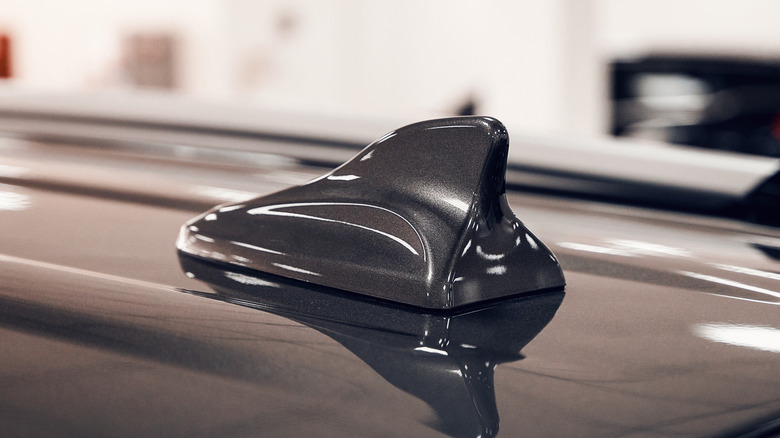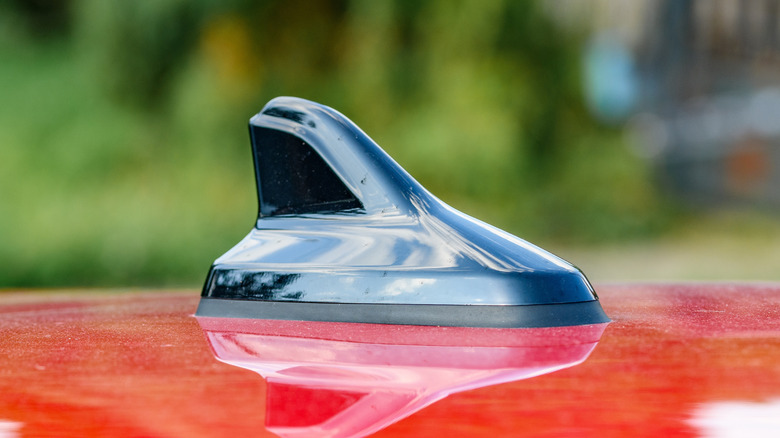Ever Wonder What Those Shark Fins On Your Car Do?
The automobile industry has made strides in technological advances since the first steam-powered cart was invented in the 17th century. One advance you've likely seen is a gadget resembling a shark fin on the roof of a car. No, it's not the fin that you see on the spectacular sea species in the Gulf of Mexico such as blacktip and hammerhead sharks, although the similar appearance to the dorsal fin is where the name comes from. If that's the case, what exactly is a shark fin on a car? Believe it or not, it's an antenna.
The car antenna is one of those technologies that has been significantly upgraded since the 1930s when it was introduced and considered a luxury add-on. At the time, those antennas could only pick up AM radio stations, but they quickly transitioned to capture FM signals in the 1940s. The design has changed over the years from the T-shape in the 1970s to the retractable versions of the 1980s, and now modern vehicles have small, plastic, shark-fin antennas. This newer technology can comprise up to 14 antennas that can capture and transmit AM, FM, and satellite radio bands. Also, the fin can process Bluetooth, cellular, driver assistance, and GPS navigation signals, enhancing communication systems within cars.
There's more to the shark fin than transmitting communication signals
The main function of the shark fin antenna may be to transmit radio and communication signals, but it offers another benefit as well: It's much more aerodynamic than its predecessors. Like how the dimples on a golf ball improve its aerodynamics, the low-profile shape of the fin reduces drag compared to previous iterations. Some cars, particularly sports and racing cars, may have multiple fins for this very reason — though not all of them may be functional for communications. Because of the reduced drag, the fin allows vehicles to get better fuel efficiency, and the cabin is quieter because there's less wind resistance and noise.
The shark fin antenna can be more expensive and complex to replace since it's connected to the communication system via coaxial cables (a type of electrical cable) or various other connectors through the headliner. It's not the best at picking up AM radio signals either. However, it's more pleasing to the eye since the modern, compact design is more integrated into the vehicle's overall style. Also, it's more durable than older versions because it's less susceptible to vandalism and low-hanging objects, such as tree limbs.

